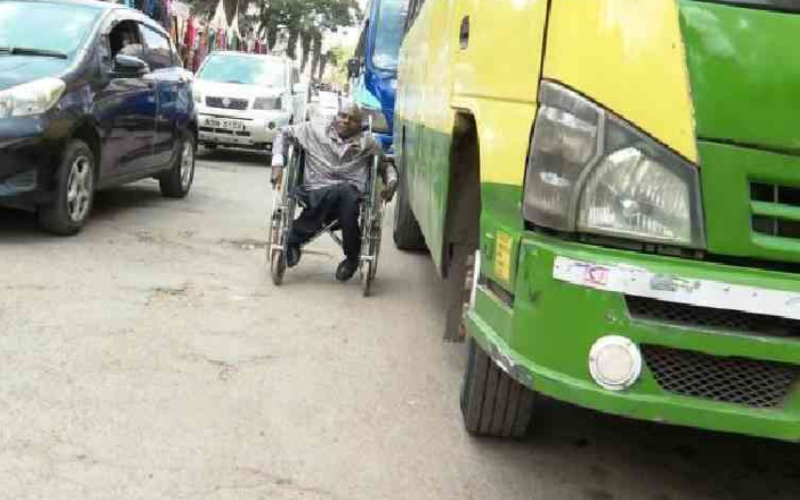
Living in Nairobi to most is synonymous with struggle and hustle. Navigating the CBD is even more agonizing.
Most Nairobians pass off each opportunity to go to the Nairobi Central Business District due to the numerous challenges it presents such as reckless driving, human traffic, and broad daylight thuggery.
How much harder could it be for a person living with a disability?
Unemployment is rife in Kenya, Educated youth with impressive academic credentials are yet to secure stable employment. The reality for persons living with a disability is more frustrating due to the stigma associated with physical inability.
This happens despite policies established to ensure persons with disabilities secure formal employment. This includes; tax exemption for companies that employ PWDs and legislation that requires 5% of the human resource to be reserved for PWDs.
The majority of Nairobians use public transport to commute from one place to another. The challenge however is that most if not all of the matatu and buses are not friendly to persons living with a disability. Alighting and Boarding public modes of transport is a nightmare by itself given that it is usually hurriedly done by the roadside by rogue touts and drivers.
As a result, a huge percentage of people living with disabilities prefer to use cabs which are a bit pricier.
The sorry state of our roads poses a huge challenge to people who use wheelchairs for mobility. To compound the situation in most alleys street paths is non-existent.
Almost always human traffic is inevitable in the city. The movement, therefore, becomes akin to navigating the jungle.
Despite the government instituting measures that compel developers to have buildings that cater to the physically challenged, there exists a huge gap in implementation.
Requirements include ramps, lifts, parking spaces, special toilets, effective communication for people with speech and hearing disabilities, a water closet, handrails, and water corridors.
Section 23 of the Persons with Disabilities Act (2002), stipulates that access to buildings by persons with disabilities should be made possible by all stakeholders of the construction industry.
These regulations remain on paper as building inspectors remain lax in enforcing government directives.
According to the 2019 census, 2.2 percent of the Kenyan population lives with some form of disability.
By Fridah Wangechi | 1 year ago
By Fridah Wangechi | 1 year ago
By Fridah Wangechi | 1 year ago
By Fridah Wangechi | 1 year ago
ODM Postpones Grassroots Elections Indefinitely
Ezra Manyibe | 6 hours ago

Joy Waweru | 1 year ago

Joy Waweru | 1 year ago